After the great experience of climbing Cotopaxi in Equador, my eye fell on the volcano Sajama, with 6542 meter the highest peak in Bolivia. This would be a real climb. Technically not really difficult, but as it is so remote and not easy accessible, the climb would make a need for a base and a high altitude camp, total taking 3 or 4 days of hiking and climbing. No cheating like driving up just below the peak and only climb the last 4 or 5 hours up to the top.
Sajama
When I arrived in La Paz I was immediately starting my researches for the climb. I talked to a nice lady at the office of the certified mountain guides. Soon it was clear, the wet season would make the climbing of high mountains very difficult. It is possible, but the weather conditions are hardly predictable. I would need a time window of 4 good days to climb it, which seemed not realistic. She strongly recommended not doing it. Even to climb volcano Parinacota, also situated in the Sajama National Park, she did not recommend. Only Huayna Potosi, the 6088 meter peak just north of La Paz, which is climbed by tourists so often, she was keen to offer, not without mentioning, that the season now would not be perfect either. But as it is so easy accessable and you can drive up with the car almost to the top, it reduces its risk and its need for effort tremendously. Ok, not really what I wanted, but I could at least reach the 6000 meters mark, although the effort for reaching it would not praise its record. In the course of the conversation she told me about Christian, a Swiss guy that owned his own climbing shop in La Paz, the Andean Base Camp. Of course this was a huge opportunity for me to gather information in a more private way in my very own language.
I spent most of the next morning in Christian’s shop talking about mountains, La Paz, Bolivia and other useful things. He gave me many useful tips such as reliable weather forecast web pages for the mountains (and they predicted a great weather window for about 4 days, starting day after tomorrow), names of people who could help me on the spot, he borrowed me books of the Andes, explained the climbs I was considering and the conditions he expects at the moment and where to get my hiking shoes mended. Basically I came to him to rent equipment for climbing Huayna Potosi and he made me search my luck directly in the village of Sajama, often the base for all climbs in that remote national park. At least I finally bought a second hand exemplary of the Bolivian Lonely Planet from him, as I often thought it would come in handy not only to rely on the internet. It has happened in the past, the little information I wrote down from the internet as a preparation before I got into a new situation, turned out to be different and since I had no other notes, I was often kind of fucked. These were the moments I wished I had a Lonely Planet. Now I own my first Lonely Planet and it already served its purpose before I will sell it somewhere else again.
The next day, after a two hours regular bus and a 3 hours minivan ride through the terrific Bolivian Altiplano, but mostly in terrible weather, I arrived at Sajama village in the heart of Sajama National Park right at the Chilean border. The lady at the park registration told me it is impossible now to climb mountains. In the rain season conditions are bad and the guides are gone. I was consternated with the outlook of no climbing possibility, bad weather and with only one mini van ride per day to the 3 hours away junction in Patacamaya, where I could go back to the main routes.
I checked into the Sajama hostal and realized the whole village must normally be full of tourists as they are many hostals. But now there were only a handful of other visitors in this about 400 people village. 9 year old Larissa, fully capable of her duty, showed me my shed: basically equipped and no heating. On a level of 4000 meter above sea level this would mean very cold nights. But I was prepared for this. What do I expect in the mountains?
At dinner I talked to Larissa’s father, who turned out to be the village’s boss. He told me intimately he can organize me a climb. Sajama would not be feasible but my second choice, the 6342 meter Parinacota would be well possible. He confirmed the expected conditions which Christian already told me. All in all I got the feeling a climb now is more agreeable than in high season, during winter. In high season there is much more snow, the penitents are a drag and it’s bloody cold. We agreed to meet next day at 4 pm and by then he would have advised a friend, who would be my guide.
The night was frozenly clear and I was highly amazed to see how in the deep black sky there were millions of bright tiny spots. So far out there is absolutely no light pollution and the moon appeared only early in the morning. The result of this was an unbelievably fantastic screen of stars. This was one of the moments I wished I had a better camera in order to capture this. Nobody would believe this sight! The Milky Way (or “el camino de leche”, as it became a joke later, but possibly the expression is correct) smeared its interstellar cloud through an out of imagination high number of planets surrounding the stars.
And as the stars were predicting, the next day became a picture book like day. The full sight around at all 6000+ mountains with their crystal white caps could be taken from a postcard that was adjusted with photo shop. My look wandered over the Altiplano towards the volcano of which I was going to be an emperor and its neighbour, 6223 meter high Pomarape until my eye fell on a smaller mountain much closer. I decided to cross the Altiplano in the most direct way and climb this mountain and in two hours I should be nearly at the top. Of course I underestimated the distance of the flat part and I reached the bottom of the climb after two hours only. In order to be back by 4 pm, I couldn’t make it to the top. But see some pictures of this walk here:
Living and dead lama, both to be found in high quantities
Today’s goal
Sajama in the background
Left: Parinacota, right: Pomarape
After my return we fixed everything for the climb that night and I met my guide Mario. But later on I started to feel bad. I don’t know what it was; I didn’t have any headache or so. My body just kept shaking like I was freezing and I almost didn’t touch my dinner. These were not really good signs for a climb. At 8pm I decided to contact Mario to tell him, I couldn’t climb that night, so we agreed to see how it will be next day and postponed the climb for one day.
Next day I just kept on sleeping almost till noon and only after Lunch I started to feel better. I spent most of the afternoon sitting outside the village, looking over the llama populated altiplano and Parinacota, listening to music and reading. I felt much better then and confirmed to Mario we could go that night.
Mario picked me up at 2 am and we drove about one hour to the base camp at 4800 meter where we immediately started walking at 3.15h. It was an easy start and I felt very good. With the experience of Cotopaxi in mind, I was very confident about the climb. But at some point, I cannot exactly tell when, I started to get difficulties. First it was only a short break I needed to insist on, nothing I worried about. Then the brakes became more frequent till I found me breaking like every 20th step. Little time later I caught me breaking after every 10th step. I found this most remarkable. From doing a lot of sports I know how it feels like to be exhausted. Nevertheless, there is always a way to keep going, but here it was suddenly not possible anymore. Even grabbing things out of the backpack were exhausting. There was no way I could keep myself going. Then I had to stop like after every 5 steps, leaning my head on my axe. The top has already been visible for a while. A small hill I would normally run up in very few minutes. But I had already seen it like this for an hour; it just didn’t get any closer. Meanwhile I took a break every 3 steps. I learned from books before that above a level of approximately 5500 meter the human body is not able to recover. When you’re exhausted you can only fix it by climbing down. Now I experienced this. The breaks I took were pure desire of air, but the breaks didn’t really help. Before I even did one step I was at the same state as before the break. I liked to get closer to observe the penitents that were just about 10 meters on the right of me. But I had to avoid any detour step because it took all my strength to go up. The top was so close but yet so impossible to reach. I seriously began to doubt I would make it. I started to understand why climbers need extra oxygen on high mountains and carry so much more weight with them. I longed for extra oxygen too and I felt so bloody slow. Mario was on the top waiting for me long before I got there, though he was only short distance ahead, just a mini sprint away under normal conditions.
Eventually after many more breaks and 6,5 hours of climbing I reached the top at 9.45am and lied down. But I still couldn’t recover. My lungs needed air, more air! That day, we were the only people on this mountain.
Mario close to the peak, but still soooo far away!
Sajama and crater in the back
The climbing time of 6,5 hours is hard to rate as climbers reported ascending times from 6 to 9 hours, always depending on the snow conditions. The descending took with the sliding technique I learned from Jaime in Ecuador only 2 hours.
A short word about Electricity: the electricity line was cut during two days during my 4 nights in Sajama. No electricity also meant no warm water for shower. After my return from the climb I took the coldest shower of my life! I guess you’ve heard me shouting even in Switzerland. But again: if no electricity is around, there’s nothing you can do and you have to deal with it. It works.
Next day I missed the only van a day at 5.30 in the morning to bring me out because I only woke up at 5.15. Fortunately I had an offer from a French girl and her private guide to join them in their car on the way out, starting at 8 o clock. So I took this possibility and the detour we made through the park to see some small lakes was really worth it. I suggest to you, if you ever go to Bolivia, don’t miss this National Park, even if you’re not interested in climbing. It’s one of the most beautiful places I’ve ever been!
Flying flamencos
They dropped me off in Patacamaya where I caught a 2 hours bus to Oruro where I spent all afternoon before I caught the night bus to Sucre.
I will stay now some time in Sucre and tell you soon what I am doing here. Only so much: it’s a lot!
I thank you all for reading about my adventures! I wish you all Merry Christmas and a happy New Year!

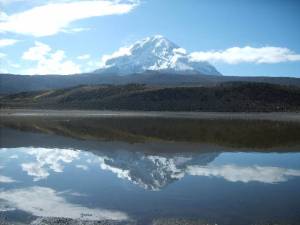
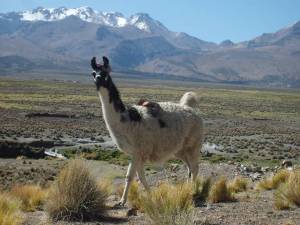
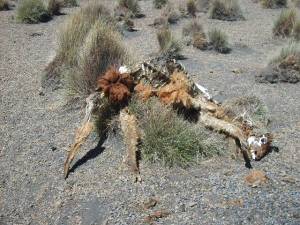
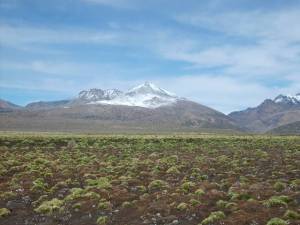
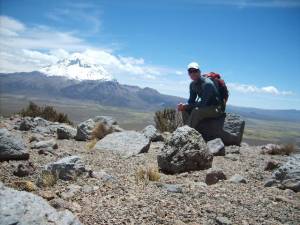
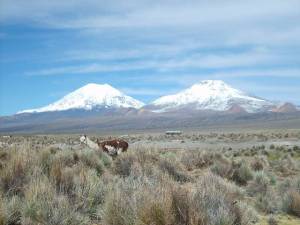
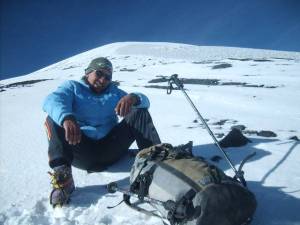
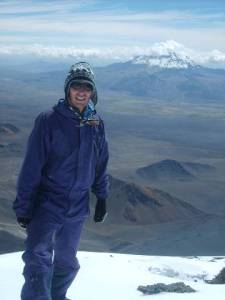
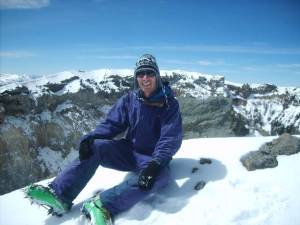
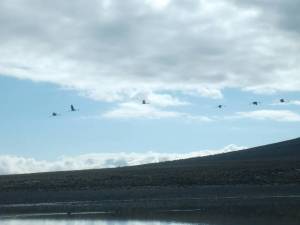
hey urs, congratulation for this mountaintrip. youre a really tough guy. merry chrismas and a happy new year and more exciting experiences.
best wishes hj.
Hi Urs, Congrats, daß Du es durchgezogen hast! Den Teil mit den fehlenden Lonely planets fand ich sehr lustig, lass Dir einen kleinen Trost sein: auch mit LP bist Du manchmal ganz schön “fucked up” :-)))
Super Sache, die Besteigung und schön beschrieben, ich hoffe Dir gehts wieder gut und Du bist bereit für die nächsten Schandtaten.
Alles Gute weiterhin. Viele Grüße aus Puerto Varas (again).
Alex